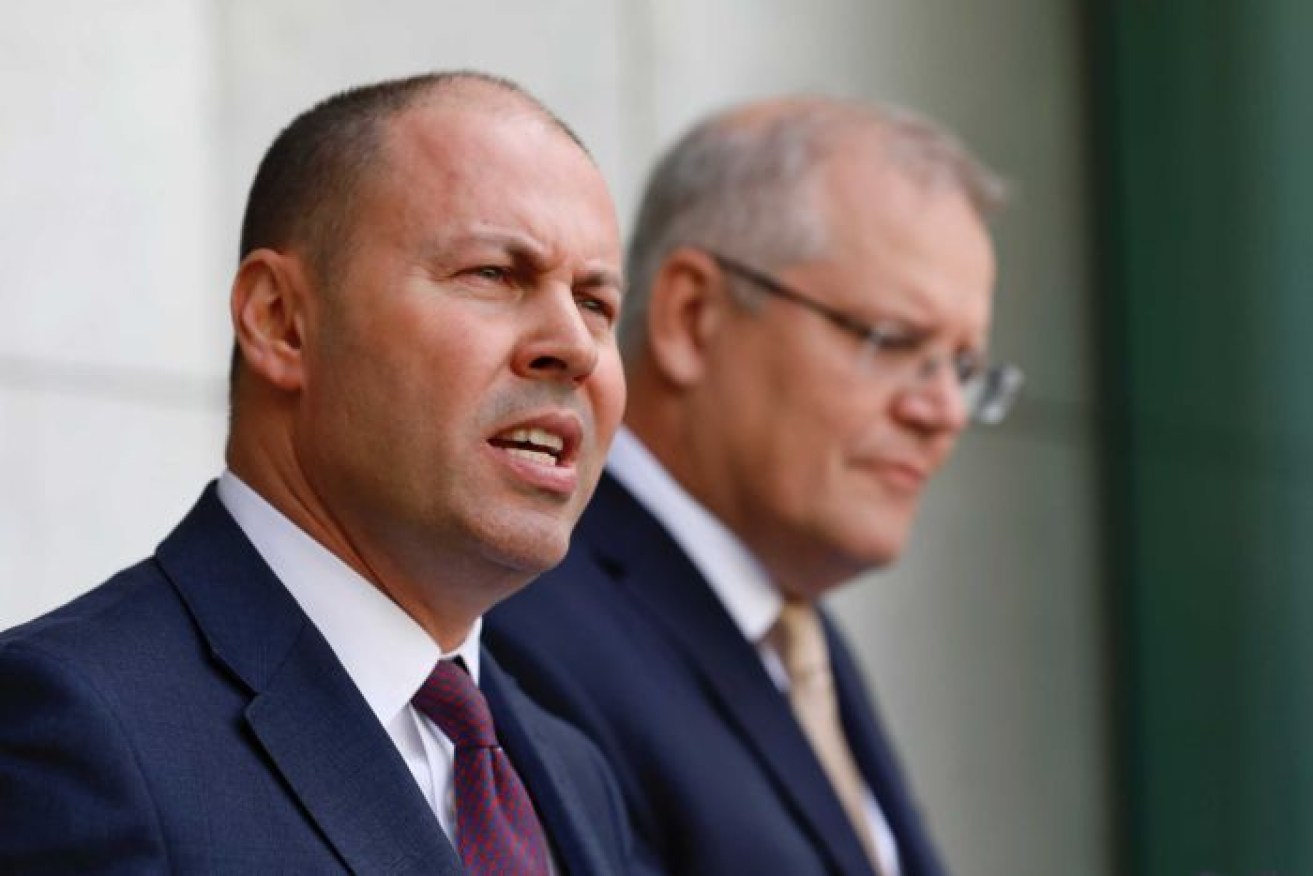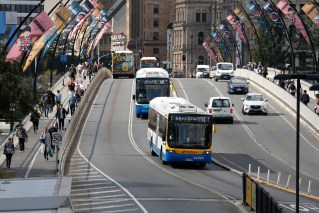‘This would mean zero extra employment’: Fast-tracking tax cuts would do little to aid economy


Josh Frydenberg has hinted tax cuts could be brought forward. Photo: ABC
Calls to bring forward tax cuts in the name of boosting the economy have been blasted as a waste of money, with analysis showing more than 90 per cent of the benefit would go to those least likely to spend extra cash.
After the “devastating” economic figures in last week’s national accounts, showing a whopping 7 per cent plunge in GDP, Treasurer Josh Frydenberg said the government was considering fast-tracking high-income tax cuts to pump up Australia’s flagging finances.
The Coalition government has $160 billion in tax cuts for higher-income earners scheduled for 2022, but these ‘stage two’ cuts could be brought forward to as early as the October federal budget.
Mr Frydenberg said on Wednesday the government was “considering the timing of those tax cuts”, comments interpreted as preparing the ground for the timetable to be accelerated.

Josh Frydenberg presents the national accounts last week. Photo: AAP
Alison Pennington, senior economist with the Centre for Future Work at The Australia Institute, told The New Daily last week that giving tax cuts to the rich would be far from the most effective measure in stimulating the economy.
She said the well-off would be the most likely to save, not spend, any extra cash – meaning the money would disappear into bank accounts or into paying off debt, rather than buying goods and services.
Now, The Australia Institute has released economic modelling showing a whopping 91 per cent of the benefit from the 2022 tax cuts would go to the richest 20 per cent of Australians.
The lowest 50 per cent of earners would get just 3 per cent of the benefit.
If both the stage two cuts and the stage three changes planned for 2024 are brought forward, the lowest 50 per cent would get just 1 per cent of the benefit.

The Australia Institute analysis on the 2022 and 2024 tax cuts. Photo: TAI
“The benefits of bringing forward the income tax cuts would mainly go to high-income taxpayers who are more likely to save the extra money or pay down debt,” the Australia Institute said, in releasing the analysis on Monday.
“Almost none of the tax cuts would go to low-income taxpayers who are more likely to spend it in their local community.”
The analysis found bringing the 2022 tax cuts forward would deliver $2430 a year extra to people on ‘very high income’ of $200,000, and $0 to someone on the median income of $60,000.
Someone on the ‘minimum wage’ of $40,000 would enjoy $110 in tax cuts, under the 2022 arrangements.
Matt Grudnoff, senior economist at The Australia Institute, said fast-tracking these changes would likely do little to help the wider economy.
“High-income taxpayers are far more likely to pay down debt or save,” he told The New Daily.
“None of those dollars would actually end up stimulating the economy. There would be little bang for the government’s buck.
“Stimulating the economy is about increasing buying and lowering unemployment. This would mean zero extra employment. This money needs to be spent in the local economy.”

Boosting welfare payments would be a better economic stimulus, TAI said. Photo: AAP
The national accounts data found that the household saving ratio exploded to nearly 20 per cent in the June quarter, up from around 5 per cent in the last quarter.
That was largely due to a huge plunge in spending, the Australian Bureau of Statistics said, but Mr Grudnoff said this was also a common trend in times of crisis – where households that could save money put more away as a safety buffer.
He theorised if high-income earners were given more in tax cuts, those savings numbers would further increase – noting other recent tax cuts for even low- and middle-income earners had also been largely saved, not spent.
Consumer spending also dropped an unprecedented 12 per cent.
This was in no small part due to businesses being closed, but has been interpreted by some as a sign of diminished consumer confidence to outlay cash – another sign that tax cuts may be saved, not spent.
“It’s a national average figure. Low-income earners don’t save a lot. Their entire income goes to essentials, so that rate is probably even higher among high-income earners,” Mr Grudnoff said.
He called for the government to rule out plans for tax cuts, and instead spend that same amount of money on large infrastructure projects, which could employ many Australians and directly pump money into the economy.
He also said money could be used to permanently increase the rate of the JobSeeker welfare payment.
“If they directly spend it, it all gets spent,” said Mr Grudnoff, suggesting projects in public housing, environmental works or aged care could be of greater economic benefit.
“The best people to give it to are low income. They shouldn’t be cutting JobSeeker. That would have a far greater stimulatory effect.”
It follows a federal budget submission from the Business Council of Australia that called for extra investment tax breaks for companies.
BCA chief executive Jennifer Westacott told the ABC’s Insiders program on Sunday that business needed more help to restart and begin employing more Australians, suggesting a 20 per cent investment allowance could be a good start.
.@JAWestacott on Victoria's reopening plan: "What we need is a
plan to get business going again. So people with COVID-safe plans, where there's no transmission – why can't they open?" #auspol #insiders pic.twitter.com/jBOuX5jKgW— Insiders ABC (@InsidersABC) September 5, 2020
“It’s a 20 per cent bonus deduction. It will make things that don’t stack up now, stack up. What does that do? For someone ordering machinery, it creates a work order. That means someone gets starting on something,” Ms Westacott said.
“If people bring forward the construction of shops. That’s thousands of people who get work. People who work in the shop once it’s open.”
She also called for businesses to be able to open faster, and for company tax rates to be cut – an argument the BCA has been pushing for some time.
The last attempt, in 2018, was abandoned by the federal government after an unsuccessful push to convince Senate crossbenchers to support the plan.








